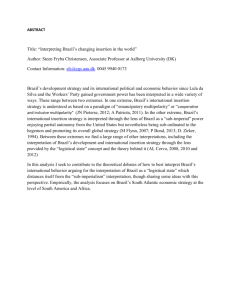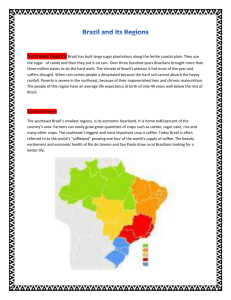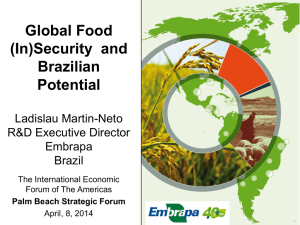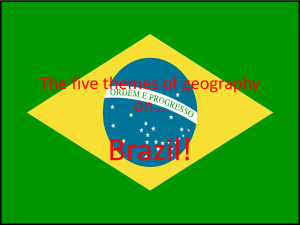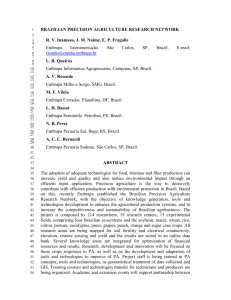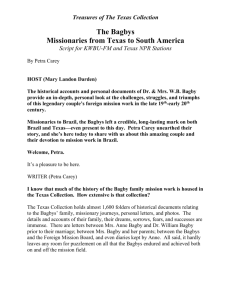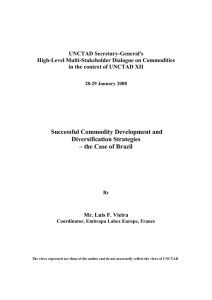Carbon Sequestration in Tropical Pastureland: Evaluation of
advertisement
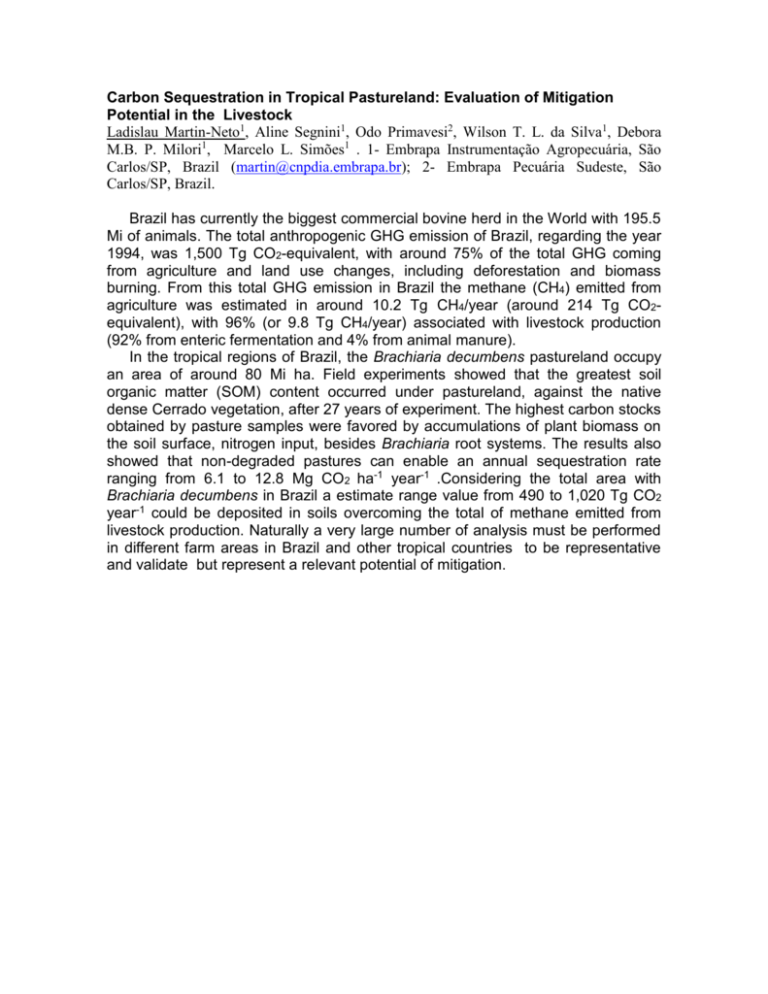
Carbon Sequestration in Tropical Pastureland: Evaluation of Mitigation Potential in the Livestock Ladislau Martin-Neto1, Aline Segnini1, Odo Primavesi2, Wilson T. L. da Silva1, Debora M.B. P. Milori1, Marcelo L. Simões1 . 1- Embrapa Instrumentação Agropecuária, São Carlos/SP, Brazil (martin@cnpdia.embrapa.br); 2- Embrapa Pecuária Sudeste, São Carlos/SP, Brazil. Brazil has currently the biggest commercial bovine herd in the World with 195.5 Mi of animals. The total anthropogenic GHG emission of Brazil, regarding the year 1994, was 1,500 Tg CO2-equivalent, with around 75% of the total GHG coming from agriculture and land use changes, including deforestation and biomass burning. From this total GHG emission in Brazil the methane (CH4) emitted from agriculture was estimated in around 10.2 Tg CH4/year (around 214 Tg CO2equivalent), with 96% (or 9.8 Tg CH4/year) associated with livestock production (92% from enteric fermentation and 4% from animal manure). In the tropical regions of Brazil, the Brachiaria decumbens pastureland occupy an area of around 80 Mi ha. Field experiments showed that the greatest soil organic matter (SOM) content occurred under pastureland, against the native dense Cerrado vegetation, after 27 years of experiment. The highest carbon stocks obtained by pasture samples were favored by accumulations of plant biomass on the soil surface, nitrogen input, besides Brachiaria root systems. The results also showed that non-degraded pastures can enable an annual sequestration rate ranging from 6.1 to 12.8 Mg CO2 ha-1 year-1 .Considering the total area with Brachiaria decumbens in Brazil a estimate range value from 490 to 1,020 Tg CO2 year-1 could be deposited in soils overcoming the total of methane emitted from livestock production. Naturally a very large number of analysis must be performed in different farm areas in Brazil and other tropical countries to be representative and validate but represent a relevant potential of mitigation.


